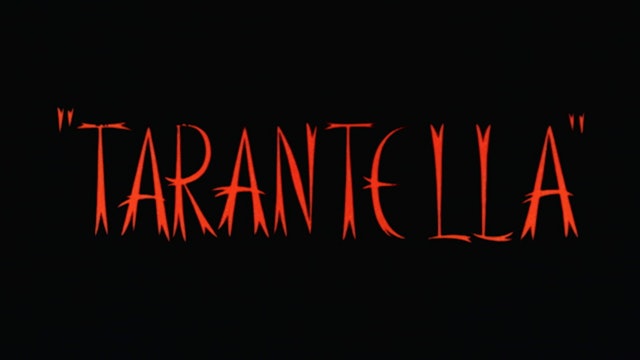-
ABSTRONIC
"Beautiful Lissajous curves [curved lines that pass through a pair of harmonic motions in perpendicular directions] can be put through a choreography that inspires—and startles—the imagination," writes Mary Ellen Bute of her quest to visualize invisible rhythms. In ABSTRONIC, she uses a cathode r...
Extras
-
COLOR RHAPSODIE
Produced by a pioneer film designer to create moods through the eye as music creates moods through the ear. Do you see anything like this when seeing sound?
"[Mary Ellen] Bute transcends her influences; her visual imaginations triumphs. I like the romantic flair of COLOR RHAPSODIE, its visual de...
-
ESCAPE
Based upon mathematical calculations proposed by Joseph Schillinger and meticulously drawn-out by Mary Ellen Bute on animation cels, ESCAPE [SYNCHROMY NO.4] reveals Johann Sebastian Bach's TOCCATA (transcribed by Leopold Stokowski from the TOCCATA AND FUGUE IN D MINOR) as a series of pulsating li...
-
MOOD CONTRASTS
Actual pictures of sound captured on Cathode Ray Oscilloscope. Music now entertains eye as well as ear. Film artist Mary Ellen Bute combines Science and Art to create SEEING SOUND. A Ted Nemeth Studio production.
"A charmingly lyrical interpretation of [Nikolai] Rimsky-Korsakov's HYMN TO THE SUN...
-
NEW SENSATIONS IN SOUND
Mary Ellen Bute's most compact abstract film energizes a jazzy advertising jingle [by Raymond Scott!] to promote RCA Victor's new stereo recordings! The barrage of visuals features a panoply of animated techniques among which eloquent oscilloscope patterns dance in complex synchronization to the ...
-
PARABOLA
"Sculptor Rutherford Boyd worked in collaboration with Mary Ellen Bute and Ted Nemeth [under the banner of Expanding Cinema], whose New York City production facilities were placed at his disposal. Filmed frame-by-frame in a sequence of stills that varied the arrangement of sculptural pieces under...
-
POLKA GRAPH
One of the favorites of the filmmaker, Mary Ellen Bute stated that POLKA GRAPH "uses the graph pattern of the music as a springboard for the visual interpretation" of the Polka (Allegretto) movement from Dmitri Shostakovich's ZOLOTOI VEK [THE AGE OF GOLD / THE GOLDEN AGE] suite. — Kit Basquin / B...
-
RHYTHM IN LIGHT
A pictorial accompaniment in abstract forms, RHYTHM IN LIGHT is a pioneer effort in a new (circa mid-1930s) art form. It is a modern artist's impression of what goes on in the mind while listening to music.
Mary Ellen Bute used Melville Webber's experience with making cardboard models and with p...
-
SPOOK SPORT
Animated by Norman McLaren, using his adroit ink-on-film technique, Mary Ellen Bute's film visualizes Camille Saint-Saëns' DANSE MACABRE. It features colored globes, ellipses and triangles that move ghost-like over monochromatic backgrounds, communicating the notion of spirits rising from a grave...
-
SYNCHROMY NO.2
Seeing sound. Music, in addition to pleasing the ear, brings something to the eye. SYNCHROMY NO.2 was designed by a modern (circa-1930s) artist to create moods through the eye as music creates moods through the ear. A pictorial accompaniment in abstract forms to the music of THE EVENING STAR (fro...
-
TARENTELLA
By 1940, Mary Ellen Bute's abstractions were shown at select theaters nationwide. Utilizing initial illustrations created by Norman McLaren for her earlier SPOOK SPORT, this "seeing-sound" film demonstrates her ability to visualize music in a style sympathetic to modernist painting. Squiggling li...














